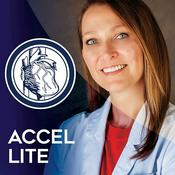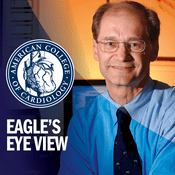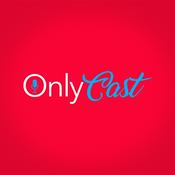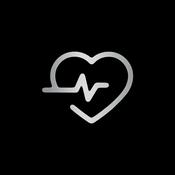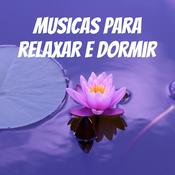JCO Oncology Practice Podcast

103 episódios

Patient-Centered Head and Neck Cancer Survivorship
15/12/2025 | 28min
Dr. Chino talks with Dr. Talya Salz, the first author of the JCO OP manuscript "Impact of an Electronic Patient-Reported Outcome–Informed Clinical Decision Support Tool on Clinical Discussions With Head and Neck Cancer Survivors: Findings From the HN-STAR Randomized Controlled Trial (WF-1805CD)" which was published earlier this year simultaneous to the ASCO Quality Care Symposium. Jeff White, the Director of PR and Strategic Communications for the American Society for Radiation Oncology, also joins the conversation to provide the patient advocate perspective. TRANSCRIPT Dr. Fumiko Chino: Hello, and welcome to Put into Practice, the podcast for the JCO Oncology Practice. I'm Dr. Fumiko Chino, an Associate Professor in Radiation Oncology at MD Anderson Cancer Center with a research focus on access, affordability, and equity. Incidence of head and neck cancers is rising, primarily driven by HPV-positive oropharynx cancers, which are commonly diagnosed in younger people with overall excellent disease outcomes. Patient-centered cancer survivorship is a key evolving area of study, with the goal of improving quality of life after cancer treatment. This is particularly important for people in head and neck survivorship given large post-treatment symptom burden, including speech and swallowing problems, dry mouth and dental concerns, neck fibrosis, and pain. I'm happy to welcome two guests today to discuss new research on how to improve communication in cancer survivorship. Dr. Talya Salz, PhD, is an Associated Attending Outcomes Research Scientist at Memorial Sloan Kettering. Her research aims to improve the quality of life for cancer survivors, focusing primarily on late effects after cancer treatment. She is the first author of the JCO OP manuscript "Impact of an Electronic Patient-Reported Outcome-Informed Clinical Decision Support Tool on Clinical Discussions With Head and Neck Cancer Survivors: Findings From the HN-STAR Randomized Control Trial." This publication was simultaneously presented with the 2025 ASCO Quality Care Symposium. Mr. Jeff White is the Director of PR and Strategic Communications for ASTRO, the American Society for Radiation Oncology. He focuses on media outreach and manages ASTRO's social media channels in a way to expand knowledge and awareness about radiation oncology and its critical role in curing cancer. He was diagnosed and treated for an HPV-positive tonsillar cancer in 2023 and shared his story on RT Answers to help other patients understand the role of radiation, surgery, and chemotherapy in head and neck cancers. Our full disclosures are available in the transcript of this episode, and we've already agreed to go by our first names for the podcast today. Talya and Jeff, it's really great to speak to you. Dr. Talya Salz: Thank you for having me. Jeff White: Great to be here. Dr. Fumiko Chino: Talya, do you mind starting us off on how you got interested in trying to improve survivorship care, and specifically what gaps your research can fill? Dr. Talya Salz: My research is really shaped by my experiences trying to navigate the health care system. I had some health issues in my 20s, and as a recent college graduate in a new job with my brand new health insurance, I was really shocked at how hard it was for me to find doctors that I trusted. It was hard to communicate what I needed and to get insurance to cover my care. That experience really steered me toward a career that addressed reasons why patients, and we're all patients at some points in our lives, have difficulty getting care that's appropriate, that's needed, and that's patient-centered. So when I started doing health services research in cancer almost 20 years ago now, there was a growing consensus that after cancer treatment is over, after patients are told there's no evidence of disease, that they're cured, there are so many more health issues that can arise that had historically been neglected. And late effects of cancer treatment can last long after treatment is over, or they can pop up months or years later. All the distress and anxiety from cancer, that doesn't just vanish once the treatment is complete. One problem is that there's no agreement on who should manage late effects of cancer treatments after treatment is over. Survivors have fewer appointments with their oncology team, and these visits traditionally focus on monitoring for recurrences and new cancers. Many oncology providers feel that late effects of cancer are realistically difficult to manage in the brief post-treatment visits or that these issues are out of their purview. So survivors are typically expected to return to the primary care they were getting, or maybe they weren't even getting it, before their cancer. And a lot of research has shown that primary care providers feel ill-equipped to address all the health issues stemming from cancer and cancer treatments. Cancer survivors can feel a real burden by this transition from oncology-focused care to more general preventive care. In my survivorship research, I hope to understand and improve how cancer survivors' long-term health issues are managed as they navigate from cancer-focused to ongoing survivorship care. Dr. Fumiko Chino: What a great and thorough answer to that question. I love the idea that you took the kernel of your own experience and then translated that into an entire career to try to improve the lived experience of cancer survivorship and outlined so many key friction points that survivors really face when they transition into this long, hopefully, road of survivorship. Jeff, I think I've known you since the entirety of the eight years you've been at ASTRO, and I immediately thought of you as the perfect guest for this podcast focused on improving head and neck survivorship communication, as you are a communication specialist. Do you mind speaking a little bit about your role within radiation oncology and then how this became both the best and the worst background to have when you were yourself diagnosed with cancer? Jeff White: Sure. Yeah, as you mentioned at the intro, I've been with ASTRO for about eight years and was brought in to kind of elevate the specialty as much as possible, either through media relations, social media, and partnerships and other things like that. When I came to ASTRO, a lot of people were saying to me like, "Wow, how are you and why are you working in cancer every day? Like, that's pretty heavy and that's pretty intense." And my answer was always, "You know, cancer is not really an issue within my family." So I didn't feel a huge connection. I was concerned about health care and access and things like that, but I wasn't really personally connected to it. So I thought, you know, I've been working day in and day out reading about cancer, understanding the different types of treatments for the different types of cancers. There were a couple of moments, and I distinctly remember working with Dr. Paul Harari when he was the ASTRO president, who happens to be a head and neck cancer specialist. He was talking me through kind of the whole process for treatment, and I distinctly remember saying to myself, "I don't ever want to get head and neck cancer. That looks pretty rough." The irony is that here we are in 2023. I had a lump in my neck right after I had a physical, so I'd gotten all my... everything was good, my blood work was clean. And just this random lump appeared one day. So I went to my primary, and he was immediately concerned, "I think that you should go get it biopsied." And so that kind of started me down the path. The good news was is that when I had the lump examined, it was a benign cyst. So I breathed a sigh of relief, and the doctor was like, "Great." He's like, "If you want to get it removed, you might want to go see a surgeon." So I kind of casually made an appointment to see a surgeon just to kind of get this little annoyance removed. And within two minutes, the surgeon was like, "I don't think that's what that is." He's like, "I think you have tonsil cancer." So that kind of started me down the path to kind of learn more about it, and obviously was biopsied and it was confirmed that it was cancer. You know, that just took me down a whole path that I wasn't prepared for in any sort of way. I knew enough to be scared, but I also had no concept for what it really was until I kind of experienced it myself. Dr. Fumiko Chino: I know you're so well integrated into radiation oncology through your role within the society. Do you feel like that gave you a leg up, at least in terms of getting a second opinion or facilitating the actual care? Jeff White: I was able to connect with a radiation oncologist right away. I initially was told it was going to be three weeks to get a biopsy, and I just about fell apart because that was like... I couldn't possibly wait that long. So I will... you know, that was a blessing to have a connection in that respect. But I did, I shopped around. I live in Washington, D.C., so I am very fortunate that I have access to three top-notch facilities within a pretty close radius. I recognize that not every patient has that, but I was able to kind of find a place that kind of worked for me, that I felt comfortable with the team, I felt comfortable with the machines that I was going to be interacting with. I also distinctly remember being in a waiting room looking at the patient materials, kind of reading it and thinking, "I've got to use this experience for good. Like, it's the only thing that could kind of calm me down a little bit because I was so panicked." And I thought, "I've got to use this as a learning experience and something that I can share with other people, and that might make this whole odyssey feel like there's a purpose to the whole thing." Dr. Fumiko Chino: That's a lovely sentiment, the idea that you would use your lived experience to try to improve knowledge and education for other patients down the road once you got through it yourself. Now, Talya, just to feature a little bit on the actual manuscript, do you mind giving us an overview about what you did, what the HN-STAR trial found, and what are you excited about in terms of the next steps? Dr. Talya Salz: The goal of our trial was to improve the management of late effects for people who had finished treatment for head and neck cancer. As you talked about before, people with head and neck cancer can experience many ongoing challenges after treatment's complete. It's really sensitive anatomy, and there can be really aggressive treatments that can cause challenges with eating and breathing, speaking, movement, not to mention ongoing distress, fatigue, insomnia. There are comprehensive guidelines for the care of head and neck cancer survivors which include recommendations for monitoring and managing more than 20 of these late effects. The problem is integrating these recommendations into clinical care, and it may be hard to identify all the relevant concerns that survivors have and then manage them in a brief clinic visit. We've learned from research among people undergoing active cancer treatment that asking people about their symptoms with standardized surveys, what we call patient-reported outcomes, can improve their symptoms, their quality of life, their communication with their providers, and even survival. So my team hoped that we could use patient-reported outcomes in the post-treatment setting for head and neck cancer. To do this, we developed a web-based interface so that head and neck cancer survivors could complete surveys online, these are the PROs, about their symptoms before routine oncology visit. Those survey responses were used to identify concerns that reached a threshold that we deemed burdensome. We used that information to personalize a clinical decision support tool that the oncology provider could use in clinic on a computer or on a tablet. The clinical decision support tool presented each health concern and how burdensome it was to the oncology provider, and the provider could click on any of the concerns to see the guideline-based recommendations for management, whether the management was further testing, referrals to other providers, medications, or self-management. There's more to the web-based tool. This tool is called HN-STAR, but those are the pieces of HN-STAR that are relevant to today's discussion. We hoped that when oncology providers used HN-STAR, clinic discussions could focus on relevant symptoms and concerns. Basically, the goal was to streamline and tailor care based on survivors' concerns. In our trial of HN-STAR, we randomized 28 community oncology practices to either use HN-STAR or to provide usual care to head and neck cancer survivors in their practice. We enrolled 357 survivors at these practices. Survivors in both arms were asked to complete PROs for 26 concerns prior to a routine post-treatment follow-up visit, and after the visit, survivors in both arms were asked which concerns were discussed in clinic. What we found was that these were very symptomatic patients, with an average of seven and a half burdensome concerns. In both arms, an average of five concerns were discussed in clinic regardless of whether the survivor reported the concern as burdensome. However, in the HN-STAR arm, an average of four of survivors' burdensome concerns were discussed compared to an average of three burdensome concerns that were discussed in the usual care arm. So importantly for survivors in the HN-STAR arm, 59% of their burdensome concerns were discussed in the clinic visit compared to 45% of burdensome concerns for survivors in the usual care arm. This means that clinic discussions did not have a broader scope. The same number of concerns were discussed, but the discussions in the HN-STAR arm were more tailored to salient survivor concerns. This is not actually the main endpoint of our trial. We hope that these more tailored clinic discussions translate to improved care and improve health-related quality of life after a year, and we're still collecting these data. But we think it is really promising that this clinical decision support tool can streamline discussions between providers and head and neck cancer survivors. Dr. Fumiko Chino: Now, Jeff, I would really love your thoughts on this trial and then about your own, sometimes maybe bumpy, transition into survivorship. So for example, what has worked for you to facilitate good conversations with your oncology team? And I would imagine given your active role within cancer education and communication that you actually have a leg up on some other survivors, but I would also still guess that there's a lot of opportunities to improve. Jeff White: Oh, you'd be right on that. So the one thing that popped into my head as you were talking about this, Dr. Salz, was the timing of this. It really... getting my input or getting a patient's input at a certain point within the timeline is important, and it also... I like the idea that I could do it on my schedule versus feeling the pressure of being asked a question in person at the appointment because there's a lot of anxiety. You want to get the appointment over with, but like, if you have the time to really think through like, "You know, this actually is more problematic. I do want to kind of talk about that." I think that's very important. I'm a communicator by nature, and so I feel pretty comfortable sharing. Plus I knew my doctor before I became his patient. But I will also be honest that I was hesitant to do too much research into what was going to happen for me long-term. I was overwhelmed, and I could only take in so much information, and that even included looking at my scans. And one of the things that I appreciated the most from my radiation oncologist was he was going to show me a scan after a PET scan, and I immediately froze because I did not want to see my body on that screen. And before he turned the light on, he said, "Do you even want to look at this?" And I said, "Nope. I don't. I really don't. You can talk to me about it, but I can't handle it." I just appreciated that he had the sensitivity to ask me that question because had he not, I would have been forced into a situation that I probably would have kind of fallen apart a little bit to see dark spots, you know, within my body and things like that. So… The other thing I will say is that I didn't do a lot of research, as I mentioned, kind of post-treatment of what to expect, so it actually was kind of a surprise to me the troubles I was having with swallowing. I literally just came from the doctor's today because I have these neck spasms. You know, I'm about 2 years out but I have these fibrosis issues and things like that. I can only take in so much content a time before I get overwhelmed. Dr. Fumiko Chino: Do you think that the information that you were given, much less the information that you did or did not research for yourself, but that what was given to you was actually sufficient to help prepare you for survivorship? Jeff White: I'm going to say 'no'. I went to a number of different facilities for surgery at one place and radiation and chemo at a different facility. I was looking to see what sort of education they were going to give me because I was curious, like, what do patients get? I knew what I had access to, and I was a little surprised at how little I was given. There was some talk about things. I will say that especially, I'm going to say on the surgery side, they kind of breezed through the bad stuff very quickly, verbally, and that was it. If I missed it, I missed it. On the chemo side, I was given a multi-page document that I actually did read before it all started because I didn't know much about chemo, so I did read that. And then obviously on the radiation therapy side, you know, I knew enough to know kind of what was happening. But I also chose to take it day by day. That just worked for me. I just was like, "Today is Tuesday. This is what's happening today." Because I couldn't think about... you know, and this was Day 7 of 33, and I just kind of went day by day by day and just took it as it came. Dr. Fumiko Chino: I appreciate what you said about the idea that the provider really needs to tailor the level of information and the delivery to the patient, right? Which is you got... he got the signal that you did not want to look at your PET scan just either by non-verbal communication or by the look on your face. He said, "You know what? We'll skip this part." And again, I think that is a really important part of the cancer survivorship, treatment survivorship journey. Talya, a recent JCO OP article, other than your own, from your colleagues within MSK used a patient portal document to try to elicit patients' core health-related values to better inform medical decision making. Amongst other things, they found that almost all providers found that the answers, when they were available, were quote-unquote "worth the time to review," although less than half, 42%, found them always or often helpful. And I'd actually love your perspective on this because one of the key points of improving how we implement patient-reported outcomes is that providers need to actually respond to them and change their behaviors. Dr. Talya Salz: Yes. I have two thoughts about this. I love this study because it actually integrated this assessment of values into clinical care to see how it was used in practice. And this value assessment is another version of a PRO, just like we used in our study, and it was used to inform an upcoming clinic visit. There was a built-in use for it. And actually, just to make the point, in our study we didn't just provide the PROs to the providers; we actually gave them some actionable information, and we'll see in future analyses whether they used it. The second point about this is that feasibility is a huge piece of this puzzle to improve patient-centered care. Patients have to complete the PROs, and they're sick, they're busy, they're inundated with surveys, they're inundated with other forms, billing, etc. And then at the same time, oncologists have to use the information. They can find the information valuable and helpful as these providers did, but they have their own constraints. Their clinics are busy, and having something be worth the time spent is a real struggle. So if a new process isn't woven into the workflow, it's unlikely to change care. So new processes have to be considered worthwhile and made easy to use. Implementation science, which is research to understand how we can implement research findings into practice, is really critically important here when we think about making changes to care delivery. Dr. Fumiko Chino: Absolutely. We can't just do a study and then just assume it's going to happen because time and again, decades of research has not translated into actual benefit to patients if not implemented. So 100%. Jeff, there was a recent JCO OP Art of Oncology Practice piece called "Patient Empowerment through Shared Decision-Making," and it speaks about the balance of, and this is a quote, "between beneficence which can be paternalistic and patient autonomy that requires a carefully crafted art." And I obviously think we still need to improve tailored communication within oncology to talk about the things that actually matter to patients, not just what we think is important as providers. This was one of the highlights for the HN-STAR intervention to me; it really helped facilitate those patients discussing the things that mattered the most to them. Jeff White: Yeah, I actually really loved that study. I felt that the empathy that kind of came through in that piece was really impressive. And, you know, I 100% believe that each of my physicians, you know, had nothing but empathy for me. But they also were seeing multiple, multiple, multiple patients per day. And there was a line in there that really resonated. It said, "Cancer wreaks havoc on human lives." And I can't... I mean, I'm going to get emotional because it's like... that is so incredibly true. It throws everything in your world off, and you feel completely out of control. The next line said something, "but we can afford some control." I have kind of reflected on like my anxiety levels which were extremely high in the process of getting the diagnosis and figuring out the treatment. Once I was in treatment, I think my anxiety went down a little bit because I was actively doing something and I was actively, you know, seeing doctors every week. Once I finished my radiation, my radiation oncologist was like, "Okay, see you later. You're going to now meet with the nurse practitioner." And I was like, "What? What do you mean? Like..." That was really jarring to me. And, you know, as much as I loved her, I was like, "What do you mean? Like, I'm still struggling here." And the struggle was real for many, many months. I didn't feel as prepared in that respect for kind of what was going to happen in the weeks and months afterwards and the anxiety of waiting for my first post-PET scan. I don't think I answered your question in any way other than to say that like, I feel like there are so many different touch points for the patient to kind of check in and kind of see how they're doing. And I felt connected to my team, and I'm obviously not a shy person, so I was sending messages through the portal even just saying like, "I'm really struggling here. You know, this is way harder than it was... you know, was presented to me. Like, these mouth sores are no joke, man. Like, that was rough." Dr. Fumiko Chino: Did you feel like you had to advocate for yourself to get speech therapy, occupational therapy, to see the right specialist to treat your ongoing concerns? Jeff White: I was lucky because I was at a cancer center that was multi-faceted, so I had access to... I even had access to mental health support. At first I said, "No thanks, I'm good." My best friend is a therapist, so I felt like I had a person that I could kind of talk to. But after a while I was like, "You know what? I think I need to talk to an outside, like, third party that, you know, doesn't know me to kind of help process all this." And so I do feel thankful that I had access to acupuncture and massage and all that, you know, lymphedema treatments and things like that. I didn't know I was going to need all that, but it certainly is something that I've used over the last months and year. Dr. Fumiko Chino: Now in survivorship, do you know the full span of what we can do, and +/- how it could help you? Because I've actually talked to some survivors that are like, "I didn't even realize that there was a sexual health specialist that I could have talked to about my ongoing concerns, because no one ever thought that my treatment for X cancer could affect my sexual health or my whatever." Jeff White: Well, what have you heard about me? What has my partner told you? No, I'm just joking. I do feel like the cancer center I went to is so comprehensive and there was a range of services that I could tick off if I was interested. So, I do feel thankful for that. I also remember that, when I was undergoing radiation therapy, I was the only head and neck cancer guy. It was all prostate cancer. So in our little men's waiting room it was me and like 6 guys that were all undergoing prostate cancer treatment. And so we kind of built a little cohort in that respect. The other thing I'll say is that I didn't realize the online community was so strong. I did actually have access to a support group through the cancer center that didn't work for me. It just wasn't... these were people that had very severe post-treatment issues, and I, you know, was just like a little newbie and they were like, "We don't have time for you." Like, "We've got bigger fish to fry." But Reddit has been amazing. So I locked into Reddit post-treatment, and I kind of wish I'd known about it while I was in treatment because it's patients talking to each other. No one's pretending to be a doctor. There's no fake stuff out there. There's no misinformation. And it's really people that are like, "I have the, you know, I have this similar cancer and here's what kind of worked for me." So I've been pretty active on there in the last year. Dr. Fumiko Chino: I love what you brought up, this idea that the communities can be really tailored to the individual, how they best receive information. So for an online community that worked better for you than like the quote-unquote "authorized" patient support group. And what works for one person may not work for another person. So I think it actually harkens back to the trial, which is that, hey, patients should actually say "This is the thing that bothers me most. Can we talk about this?" Because for some people it might be neck spasms, for other people it might be dental caries, and for someone else it might be how they look and feel about themselves. We are at the end of the podcast. I do want to leave a little bit of space for anything that you feel like we haven't covered yet. If we want to talk about surveys, if we want to talk about the community site research NCORP of it all, because I think there's a lot of opportunities to think about, for people who can't be treated at cancer centers that have all of the bells and whistles. For community practices, how do they actually improve survivorship care? I'd love to just open it up. Any last thoughts? Dr. Talya Salz: I was thinking about what you said, Jeff, in terms of all the opportunities that were available to you at your cancer center. And I also come from a... work at a cancer center where all of these services and opportunities are broadly available, at least they're in place whether or not people use them and can afford them. But it was really important to our team that we make sure that our intervention works for people in community oncology settings. And we worked with the NCI's Community Oncology Research Program, or NCORP, through the Wake Forest Research Base. The NCORP is dedicated to enrolling cancer patients who are treated at community oncology practices across the country into clinical trials, including cancer care delivery research trials such as the one that we did. And it was really important to us to be able to create a tool that would work in these settings. There was a real range of services that are available at these community oncology practices. I mean, some of them did have mental health services on site, some of them did not; speech and swallow rehabilitation therapist - some sites have them, some sites do not. And so it was a real challenge building a tool that could be flexible enough that providers could select options that were realistic for their patients. So I'm really grateful we had the opportunity to work with them. It was a great experience, and we ended up with a pretty racially, ethnically diverse group of cancer survivors, including a significant minority from rural areas of the country too. That was a real strength for us. Dr. Fumiko Chino: I would be remiss not to mention that NCORP is funded by the NCI, and the research that comes out of NCORP is not possible without strong federal government funding, which is the thing that is exactly at risk right now in the current restrictive funding environment. Dr. Talya Salz: I hope that my vocalizing my support while you were talking did not get in the way, but that is extremely important that this kind of research continues to be funded by the NCI and actually the American Cancer Society funded a lot of this research as well. Dr. Fumiko Chino: Thank you so much for this amazing conversation today. Many thanks to both Dr. Salz and Mr. White, as well as our listeners. You will find the links to the papers that we discussed in the transcript of this episode. If you value the insights that you hear on the JCO OP Put into Practice podcast, please take a moment to rate, review, and subscribe wherever you get your podcasts. I hope you'll join us next month for Put into Practice's next episode. Until then, I hope your winter is warm and bright. The purpose of this podcast is to educate and to inform. This is not a substitute for professional medical care and is not intended for use in the diagnosis or treatment of individual conditions. Guests on this podcast express their own opinions, experience, and conclusions. Guest statements on the podcast do not express the opinions of ASCO. The mention of any product, service, organization, activity, or therapy should not be construed as an ASCO endorsement. Conflicts of Interest Fumiko Chino Employment Company: MD Anderson Cancer Center Consulting or Advisory Role Company: Institute for Value Based Medicine Research Funding Company: Merck Talya Salz No relationships to disclose Jeff White No relationships to disclose

Improving CAR-T Access
17/11/2025 | 32min
Dr. Chino talks with Dr. Navneet Majhail and patient advocate Laurie Adami about CAR-T therapy, an advance cancer treatment that biologically engineers a patient's own T-cells to recognize and kill cancer cells. This discussion will be based off the JCO OP article, "Outpatient Administration of Chimeric Antigen Receptor T-Cell Therapy Using Remote Patient Monitoring," on which Dr. Majhail served as lead author. TRANSCRIPT Dr. Fumiko Chino: Hello, and welcome to Put into Practice, the podcast for the JCO Oncology Practice. I'm Dr. Fumiko Chino, an associate professor in radiation oncology at MD Anderson Cancer Center with a research focus on access, affordability, and equity. CAR T-therapy is an advanced cancer treatment that biologically engineers a patient's own T cells to recognize and kill cancer cells. It has shown remarkable benefits, leading to long-term remission or even cure for select patients with hematological cancers that have not responded to other treatments. Primary trials were exclusively conducted in the inpatient setting due to high risk of quick onset and life-threatening toxicities requiring close monitoring and immediate treatment. Advances in symptom monitoring and care delivery have allowed the introduction of outpatient CAR T, which is cost saving and more patient centered. I'm happy to welcome two guests today to discuss this promising operational shift. Dr. Navneet Majhail, MD, MS, serves as the Physician-in-Chief of Blood Cancers at the Sarah Cannon Cancer Network, where he oversees 10 transplant and cellular therapy programs that collectively perform over 1500 transplants and cellular therapies each year. He is the first author of the JCO OP manuscript, "Outpatient Administration of Chimeric Antigen Receptor T-Cell Therapy Using Remote Patient Monitoring," which was published earlier this year. Ms. Laurie Adami was President of the LA-based Interactive Data's Fixed Income Analytics Division when she was diagnosed with stage four follicular lymphoma at age 46. From 2006 to 2018, she was in continuous treatment and received multiple lines of therapy, including three clinical trials. In 2018, she received treatment number seven, a clinical trial of Kite CAR T-therapy. Thirty days later, she was in complete remission, where she remains today. She is an active patient advocate and legislative policy advocate for several not-for-profits. Our full disclosures are available in the transcript of this episode, and we have already agreed to go by our first names for the podcast today. Navneet and Laurie, it's so wonderful to speak to you today. Dr. Navneet Majhail: Thank you. Looking forward to this conversation. Laurie Adami: Thank you, Dr. Chino. I guess I'm supposed to call you Fumiko. Great to be here today. Great to be alive, first of all, and great to be here on this call. Thank you for having me. Dr. Fumiko Chino: I think with everything you've gone through, Laurie, we all go on a first name basis. Now, Navneet, do you mind starting us out with a short history of CAR T in the US, including the side effects and the precise care delivery needs that were the initial reasons why care was limited to the hospital? Dr. Navneet Majhail: So, Fumiko, you laid an excellent background as to why these therapies are done in the inpatient side and what they are. I mean, it's really exciting, right? These are what we call transformative therapies in oncology or medicine as a whole. You're taking patients with very, very advanced diseases who traditionally would have gone on to hospice, where you can potentially put around half of these patients into very deep remissions, and maybe some of them might be cured of their underlying malignancies. Now, having said that, as you alluded to in the introductions, most of the trials early on were focused entirely on the inpatient space for a few reasons. One was the unknowns. These were early therapies, unknown side effects, you needed to have that monitoring. The second, some of the very early work that was done with these therapies, it was clear you can have some potentially severe and fatal side effects, like cytokine release syndrome, what we now call ICANS, or immune effector cell-associated neurotoxicity syndrome. You have issues such as HLH, hemo-phagocytic lymphohistiocytosis. These are some really fatal, potentially fatal and severe side effects, which really needed close monitoring on the inpatient side. As things have evolved, obviously we've gotten smarter at selecting patients. The constructs have improved as well, where the incidence and the severity of these toxicities has gone down. And as we become smarter overall, both from a supportive care, patient selection and technology perspective, certainly there are opportunities now for us to look at delivering these care where patients can access these therapies better. Dr. Fumiko Chino: That's a wonderful summary, and I know at this point, I believe over 300 sites are Foundation for the Accreditation of Cellular Therapy accredited to deliver CAR T-cell therapy. So, we really have gone very much into the space where we're trying to expand access to these therapies. Now, Laurie, I know that your CAR T was in 2018 on a phase two trial at UCLA, but your treatment started in 2006. Do you mind walking us through what that was like for you? How did it go? What was required in terms of travel, time, for, I know, again, just not just yourself, but also your family, and it's through the treatment and then also the recovery? I'm presuming that you had to be in the hospital, for example, for your CAR T for at least a week, if not longer. Laurie Adami: Yeah, I was diagnosed in 2006 and spent 12 years in continuous treatment, all in Los Angeles where I live. When I did my CAR T, I was also in Los Angeles, so that made it easier for me, as well as my family, because when I went in for CAR T, I was just at the UCLA main hospital, which is about 20 minutes drive from my home. The process for 12 years was difficult at every level, both physically as well as emotionally and mentally. My son was only in kindergarten when I was diagnosed, and I was given horrible statistics up front in terms of my survival likelihood, but I was determined to stay alive, and thankfully for me, I was able to get into CAR T really at the end. And like Navneet said, I would have been going to hospice if the CAR T trial hadn't opened because I had literally burned through six other treatments, none of which worked. Dr. Fumiko Chino: It's truly a transformative treatment, and I can only imagine that for you yourself, the burdens must have been immense. I know that you were an executive flying, it sounds like around the world. How did that change your life? Laurie Adami: So I lost my career as a result of my illness because it was clear after my first relapse, after the only treatment that existed at the time, which was 19 years ago, that this was going to be a battle that wasn't just going to go away. And so, I was really seeking things constantly, and I would do a treatment, it would fail right away. It was really, really difficult at every level. So I had to go out on disability from my work, and then I was never able to go back, because by the time I finally got CAR T, then COVID hit, I couldn't start traveling around the world with my special immune system. Yeah, it was costly at so many levels, but thankfully, thanks to science and all of you doctors on this call for administering these therapies, I am so grateful to be alive. Dr. Fumiko Chino: Well, that segues really nicely in terms of the next advancement of science, which is to take CAR T out of the hospital. Now, Navneet, do you mind giving us an overview of your JCO OP article, outlining key considerations for outpatient administration of CAR T, so discussing things like remote patient monitoring and what is really required in terms of the investments from the cancer center? Dr. Navneet Majhail: Certainly, Fumiko. At the end of the day, as we considered moving these therapies to the outpatient setting, there were two big problems we were trying to solve. One was the capacity issues. I mean, again, we've had increase in the utilization of these therapies, at least across our network, at the rate of like 15 to 20% per year, right? So that's your trajectory where it's heading, and there's a lot more indications coming down the road, and there's no way our health system or any other health system in the US has enough beds on the inpatient side to accommodate this, right? So one was, how do we address the capacity issues that are happening today and that we foresee happening in the future in an innovative way? And the second was, how do we make this therapy more financially sustainable? These are expensive therapies, just by the cost of the product and the care that's given around it. And the more we can do this in the outpatient setting, the less we use inpatient resources, everything that comes with the hospital stay, and would certainly make this more financially sustainable. And I think as we think about moving this to the outpatient side, of course, across our network and for any other place that's considering it, a big component is patient experience and patient safety, right? Because as we discussed early on, there are some potentially really lethal toxicities that are associated with these products. They've gotten better. They are seen less often, and it's not very often that we see those severe toxicities, but they can come up very suddenly. We've got to make sure that you've got the pathways and everything else in place to manage those patients in a safe way. So, we have a multi-site network. We currently have 10 centers that are a part of the Sarah Cannon Transplant and Cell Therapy Network. It's physician driven, and what we do is we like to standardize things as much as possible, so all sites can do the same thing, and we can monitor outcomes, data, and what's happening to patients in that context. So, where we ended up with is using a remote patient monitoring platform to essentially care for these patients in the outpatient setting. It's actually a pretty cool technology and a cool thing our teams came up with. I'm talking about this, but to be honest, I cannot take any credit for what our teams have done. At the end of the day, we currently have a contract with an organization called Current Health. So, they have these kits, which include a remote patient monitoring device. It's an FDA cleared device, and it's essentially something that you slip onto your arm. It's a small, round, an inch-wide monitor. And what it does is it sends data on your vitals, your temperature, your pulse ox, your pulse rate, a whole variety of things, through Bluetooth technology to a central command center that's manned by trained nurses. And what we did was we worked with Current Health to essentially come up with the algorithms for what is a true indicator, potentially true indicator for complications like CRS, right? So if you're sleeping at night, guess what? Your pulse rate goes down, right? If you've just come back from a run, you'll be tachycardic, right? So if you're sleeping with three blankets on you, your temperature will go up, right? So how do we come up with these algorithms which take out the noise and really help us focus on what might be potential CRS? And I'll confess, we are always working to refine these algorithms, make them better as we go forward. Once the nurse sitting in that central command center identifies a potentially true alarm, then we work with them to come up with the triage pathways and the clinical pathways for management so that the patient is triaged to the right care at the right time. So if they end up in the ER, what are the pathways for the ER to give tocilizumab very promptly, right, within 60 minutes of showing up there and so forth. So that is what we have developed across our network from an outpatient care platform, and what we've seen in this context is that we still have around two-thirds of our patients who end up getting admitted in the outpatient setting. So we typically start as a start with the lymphodepleting chemo, and we'll keep it going through at least day 14 after the infusion of the CAR T-cells. And during this time period, around two-thirds of our patients will still end up getting admitted because with the slightest fever, we don't want to take a chance. We'll triage them quickly to the ER or the hospital. But then the median length of stay was only four days compared to our historical data where, as you can imagine, we would keep these patients in for a median of 16 days. So that's how we are managing these patients as we go forward. And like I said, we are doing a lot of research to see how can we make things better, how can we manage some very, very early CRS in the outpatient setting, for instance, and how can we keep refining the alarms and so forth? Dr. Fumiko Chino: That sounds amazing, and it sounds like it's truly something that would not have been capable without some more advanced technologies in terms of remote patient monitoring. So we're truly galvanized by our technologies, telemedicine has really revolutionized, at least during COVID. So I'm assuming you're capitalizing on some of those advancements. Dr. Navneet Majhail: We certainly are, and one of the interesting things I'd like to share, and maybe Laurie can comment on this or may validate this, right? So we collect the survey data, and we talk to the patients about their experience. And one interesting thing that came across these conversations was the fact that many patients and their caregivers felt more secure that there was someone potentially watching them 24/7 for these alarming signs. As you can imagine, as these patients come in, we scare them, right? "Hey, this is very, you know, innovative therapy. This might fix your lymphoma or myeloma, but hey, what, I mean, you got this bad CRS, you know, X number of people will die because of CRS and severe ICANS where you may get seizures and whatnot. But yeah, go home and sleep over it, right? So you can go home, you can stay in the outpatient setting, and come back tomorrow to see us, right?" So it was very interesting to us, that theme where patients felt that, okay, they had a level of reassurance that there was someone watching them. And that to me was very interesting as we collected that data together. Dr. Fumiko Chino: Laurie, is that something that you've heard of from other patients, at least treated in the outpatient setting? Laurie Adami: So I have not actually spoken to a patient who's had the monitoring on them. I've spoken to numerous patients who've done it outpatient and have been very scared, and their caregivers have been even more scared, because you know, not all caregivers are created equal. Some of these patient populations are older, and you know, there can be confusion. So, you know, I think the fact that these monitoring devices are going to become available will be immensely helpful, not only for the patient's well-being, but for their caregiver who's right now on the hook. If they fall asleep and miss the patient spiking a fever, I mean, this is the scary stuff. So, I think this is fantastic. I do wonder how you manage, how you figure out the ICANS part of it, because I know the symptoms you're talking about are primarily CRS. So does the monitor do anything that can gauge the mental activity or no? Dr. Navneet Majhail: We are spot on that the monitoring is mostly focused around CRS. Now, for example, our program here in Nashville, the process we've set up is, so the kit that the patients use also has a tablet, through which you can have a video conference capability, right? So the process that we've set up here at the Nashville program where I practice is that one of our nurses will do a video call at 8:00 p.m. And again, I mean, you can imagine, I emphasize the team effort because you've got the outpatient clinic team, they'll have patients, as you know, there's a whole assessment that patients do, where they write their name, you know, a sentence and, you know, everything else. And at the end of the day, all that is basically passed on to the nurse who's on at night to do those assessments for patients. And around 8:00 p.m. or so, she'll or he'll connect with the patient through that video conference capability. They'll have them write that sentence and then show it on that video to see what it looks like. And then he or she can compare as to what it was 12 hours earlier at 8:00 in the morning. So it is not around the clock ICANS monitoring, but at least patients don't go 24 hours or more before getting that assessed. Dr. Fumiko Chino: No, that's so helpful to kind of have that clarity. And I love what Laurie said that patients and patient caregivers actually kind of want this, the idea that there's more eyes on them and they're getting this sort of continuous monitoring. So, it sort of meets the brief in terms of optimizing time at home, but also reassurance for patients and caregivers. Dr. Fumiko Chino: Now, Laurie, I had watched your interview on The Patient Story, and you had said something I thought was quite striking. You had gone to four different large cancer centers for various treatments, that ultimately led to your cure with CAR T. Do you mind speaking about how access to specialty care can be really a barrier for patients? I know that you had said previously that you felt lucky to live in LA. And I'm assuming that's not just for the nice weather. Laurie Adami: No, it's not. I'm from the Northeast, and I'm still a Northeasterner, but being in LA where I could get to so many care centers so easily within an hour was a real bonus for me. The other thing that I was lucky to have was good insurance. So I had PPO insurance when I was employed, and that allowed me to see specialists. And I talked to many, many patients now, you know, probably over 50% of patients get diagnosed in community oncology settings and/or community hospitals, and oftentimes those settings don't have specialists. So I speak to patients being treated at Kaiser where they don't even have a lymphoma specialist. And so they're not being given necessarily the best information about the available treatments, and they may never even hear of CAR T. So, it's a real problem for a lot of patients to get to specialists, and unless you're seeing a specialist, you're unlikely to hear about these newer modalities of treatment, immunotherapies, small molecule drugs, CAR Ts, much less likely if you're seeing a general oncologist. They're not going to know about it. And what do they know about chemotherapy, auto stem cell transplant, and allo stem cell transplant, which is being done for over 50 years? And so I'm still speaking to many patients who can't get CAR T because their insurance either won't pay for it, or they live in a state where there are no CAR T centers, which believe it or not is still the case in the United States today. There's still a small number of states where you have to travel two or three states to get to a CAR T center, and you have to get a referral from your community oncologist, and there's no easy mechanism for that happening back and forth. And I'm working on a couple initiatives with some focus groups to make that better, but it's a real struggle. And that's why I was lucky. I had good insurance, I lived in LA, I was treated at four big cancer centers, and within an hour, I could fly to San Francisco or San Diego to see more specialists. So it's really a function of when you're diagnosed, what is your insurance? What assets do you have? What benefits do you have? I speak to patients who if they don't go to work today, they don't get a paycheck. They can't miss a day to travel eight hours to go see a specialist. So there's a real problem with access in the United States and a real problem, I think, with bifurcated health care. Dr. Fumiko Chino: I love that you have used the privilege that you did have, even in the context of a stage four diagnosis, and then used that energy that you kind of came out of it to continue to advocate aggressively for other patients. So I, you know, I applaud you a thousand times for that. Now, Navneet, can you talk about the access barriers from the provider perspective? I know that you had mentioned capacity building in the OP paper and about how outpatient treatment facilities programs development in the community oncology practices could certainly help ease some of these geographic barriers to care that Laurie just so eloquently brought up. Dr. Navneet Majhail: So, Fumiko, to put this into context, let me start with some numbers first. So if you look at the number of patients in the United States who can potentially benefit from a CAR T-therapy for the currently approved indications, one in five patients gets it. So I'll let that sink in. Despite all these transformative therapies we've talked about, only one to in five to one in four patients who needs a CAR T-therapy will get it. And some of the research that we have done and others have done, once you get to a treatment center, right, so once you get to a treatment center - so you've bypassed all those geographic, insurance, many of these other access barriers to a CAR T-therapy - once you get to a treatment center, two out of the three patients will end up getting an infusion or treatment. So there's still a third of these patients who will not get an infusion once they hit a CAR T center, mostly because their disease is too advanced by the time they show up. So these are the high-level numbers that put into perspective what the delta is, right? What the gap is that we need to solve as we go forward. So now, as you think about the access barriers, I think Laurie, you were spot on some of the education gaps across many of our colleagues in the community where they may not be aware of the indications, the advances, and the opportunities around CAR T-therapy. So, obviously, I think that's a big issue. Even on the provider side, even though they are patient-centric access barriers, I mean, we feel it too, geography, trying to get patients into see us, right? Some of the insurance barriers you talked about, I mean, the health disparity issues that I think Fumiko, you're very familiar with. And as you can think about a therapy which is expensive, is limited to select sites, all those access barriers that we face across oncology just get accentuated. They get multiplied. As we think about the community practices, as, and you're spot on, I mean, how do we increase access? A big opportunity is getting these to the community sites. I think provider education is a big one. The capacity pieces, how do we build capacity is a big one. And I think the third one is what I call the economics of care delivery. What that means is not just the cost of these therapies, but things like the infrastructure that needs to be built up, the people you need to hire, train, get to a good place, all those pieces, apheresis, for example and so forth. And then all the reimbursement, revenue cycle pieces that as a practice you have to deal with. So these are some of the barriers at the community practice levels people feel as you consider accessing these therapies. Dr. Fumiko Chino: Absolutely. You know, Laurie, did you have anything to follow up with that? Laurie Adami: I just wanted to comment on this financial issue because I know Navneet talked about the high cost of these therapies, which is completely valid, but if you look at the treatment that I had prior to my CAR T, I had over $3 million in costs billed to my insurance. That was before CAR T. So, one of the therapies that I was on in a clinical trial, where I was actually the long tail in the trial, was a PI3 kinase inhibitor trial that I was on for almost six years. And while it never got rid of my cancer, it bought me stable disease. I stayed on that pill for almost six years. It bought me stable disease to allow me to get to CAR T. But that drug got priced for $180,000 a year, and I was on it for six years. Right there, that's almost $1.2 Million. So, I think if you look at the alternatives, you find out that really CAR T is not, I mean, yes, it is expensive, for sure, but you know, if you look at something like an allo stem cell transplant, which was being tossed at me over the 12 years as an option, that's far more expensive than CAR T, because not only is it a very long time in the hospital - they were telling me to expect up to three months in the hospital - but then a lot of patients have terrible graft-versus-host disease, so you spend the rest of your life in medical care. So, I just wanted to raise that point, and to the extent we can reduce the hospital costs by taking these treatments to patients outpatient, that will be a huge benefit, because that can be half of your cost in hospital stays. When I was in the ICU, I think it was $38,000 a night for one ICU night. So these hospital stays are very costly. But I did want to just point out that it's kind of painted as black and white, so expensive, but I think we have to contrast it for all the other options patients are getting. You know, if you're on a drug for many, many years, a small molecule drug, those drugs are very expensive. And if you can do a one time, one and done, you're far better off financially. Dr. Fumiko Chino: Absolutely. And I think, and this is not to put it in such stark terms, but I'll say this as a cancer widow, dying in the hospital is very expensive, and it is a terminal diagnosis and then in the ICU, we're talking about incredibly expensive and by definition morbid and mortal. So if we're saving lives and creating cures, that's a high-value proposition. Now, Laurie, it is very clear that you're a very engaged patient, and I know you've spoken before about how you were very active in your care in terms of researching new treatment options, going to clinicaltrials.gov. Can you speak a little bit from your experience both as a patient and an advocate about how access and knowledge has improved a little bit over time? For example, the Leukemia and Lymphoma Society was recently renamed to the Blood Cancer United, but I know they have a clinical trial support center, and I know that you have played a role as a peer mentor for some other patients, so I would love to hear more about that. Laurie Adami: Sure. Yeah, so when I was diagnosed 19 years ago, there were very few tools, and it was really a struggle for me to get information. And yes, while I use clinicaltrials.gov, I found it was full of false information. It wasn't updated promptly, and I was very concerned, and then I found out the FDA didn't approve what goes into clinicaltrials.gov. So there's a lot of junk in there. And when patients say, "Oh yeah, I'm looking at clinicaltrials.gov," I'm always encouraging them to reach out to a nonprofit that is focused on their area because that's the best place to get valid information. Now, the problem is most people don't know about nonprofits because outside of the American Cancer Society and Susan Komen, very few nonprofits spend any money at all advertising because their mission is to cure the disease they're focusing on and to make sure patients get the financial help they need. So the money that they're raising is going to research and helping patients. So you don't see advertisements on TV, "Oh yeah, if you need to find a clinical trial for pancreatic cancer, call PanCAN Action." You just don't see it. So I had to figure that out on my own, and now it's amazing what organizations like LLS or Blood Cancer United are doing because you can call them, and I've called on behalf of many patients, I've provided all the pathology information and the treatment history. Within 48 hours, they return a list of all the trials that you qualify for in whatever geographic region you request, and it's at no cost at all. And Blood Cancer United will actually call - I just hooked a patient up with a trial at the National Institutes of Health, thankfully a trial that didn't get shut down yet - and they actually called on behalf of that patient to make sure that they were still accepting enrolling patients. So that's something that I think most patients don't know about, and I wish physicians, when they diagnose their patients, I wish physicians would provide resources. You know, "You should reach out to Blood Cancer United or Lymphoma Research." But the problem is most of these big academic research centers are also doing their own fundraising. So they don't really want to connect you with another nonprofit that's raising money. So it's kind of a conflict a bit. I mean, I know they want to do the best for patients, but they're restricted in terms of what kind of information they can hand out to the patient. And I've always wanted to put like pamphlets in my oncologist's office because when you get diagnosed, no one ever expects to get diagnosed, and 40% of people in the United States are going to get in their lifetime diagnosed with cancer. So you are going to have that bomb go off, a lot of people are, and you don't know what to do. And if someone had told me back when I was diagnosed, these nonprofits have resources, reach out, there are support groups, there are patients you can talk to, it would have saved me so much time and aggravation, and I just had to figure it out on my own. And sadly, that's still the case in large part. Dr. Fumiko Chino: I love this siren call to be an activated patient, but also for providers to really think about the full dynamic of care for the patient in front of you and to not be narrow in your institution, but to really think about what are all of the resources that we can marshal around everyone. I do want to leave a little bit of space at the end if there's anything that you feel like we didn't cover. Dr. Navneet Majhail: Yeah, again, I think, Fumiko, we're still evolving in the field. As we think about where the field is going, we'll have constructs hopefully in the solid tumor space. Autoimmune diseases are coming. We're all excited about that. But I think going back to the fundamentals, so how do we take care of patients well? It's not just the care that happens in the context of the first few weeks before and after infusion, but then how do you watch these patients lifelong to look for late effects, survivorship issues, and so forth as you think about it. And I know we didn't get a lot of time to talk about this, but especially since your focus was how do we take this to the community, a big piece is ensuring the quality of care these patients receive in the community. You mentioned FACT early on and its role in ensuring high-quality care, it becomes even more relevant in the context of outpatient care as we think about these therapies. Dr. Fumiko Chino: Absolutely. Now, Laurie, last thoughts from you? Laurie Adami: So I did want to add that we talk about CAR T and all the risks of CAR T and the long-term follow-up because I understand it's a genetic tool, right? This is not just chemo pills coming off a factory line. This is using your own immune system, modified, etc. But I think we also need to remember, if we contrast it to the brutal treatments I had before CAR T - CAR T, I'm not worried at all about that. If I get secondary cancers down the road, because I was so heavily treated, and most patients as of right now have been heavily treated. They've had radiation, they've had chemotherapy. We know those cause secondary malignancies. All of my side effects have to do with my prior six lines of treatment, not with CAR T. So I just want to remind everybody that, you know, we look at this in a vacuum, but the old stuff wasn't so great either. And maybe we should talk about how these patients are doing after those therapies. Anyway, that was it. Dr. Navneet Majhail: Laurie, I was going to say, thank you so much. I'm going to take so many of your quotes and enlarge them and put them in my clinic. You've been incredible. Laurie Adami: Reach out anytime, and if I ever get to Tennessee, I'll come see you. I'll buy you dinner. Dr. Navneet Majhail: Looking forward to that. Dr. Fumiko Chino: I love the idea that every single provider will have quotes enlarged from a patient advocate who was treated for their disease site in their clinic, because if there's anything that we can learn outside of the science, it's from the lived experience of cancer treatment and survivorship. I want to thank you so much for this great conversation today. Many thanks to Dr. Majhail and Ms. Adami, as well as our listeners. You will find the links to the papers that we discussed in the transcript of this episode. If you value the insights that you hear on the JCO OP Put into Practice podcast, please take a moment to rate, review, and subscribe wherever you get your podcasts. I hope you'll join us next month for Put into Practice's next episode. Until then, please stay safe. The purpose of this podcast is to educate and to inform. This is not a substitute for professional medical care and is not intended for use in the diagnosis or treatment of individual conditions. Guests on this podcast express their own opinions, experience, and conclusions. Guest statements on the podcast do not express the opinions of ASCO. The mention of any product, service, organization, activity, or therapy should not be construed as an ASCO endorsement. Conflicts of Interest Fumiko Chino Consulting or Advisory Role Company: Institute for Value Based Medicine Research Funding Company: Merck Laurie Adami Stock and Other Ownership Interests Company: Gilead, Merck, Pfizer and Universal Health Services Navneet Majhail Stock and Other Ownership Interests Company: HCA Healthcare Consulting or Advisory Role Company: Anthem, Inc

A Podcast About Podcasts: Podcasts as Educational Tools for Providers (and Patients)
21/10/2025 | 23min
Dr. Chino welcomes Dr. Vivek Patel and Dr. Eleonora Teplinsky to discuss a recent article in JCO OP that reported a podcast-based curriculum could improve knowledge and comfort with common education topics for oncology fellows. TRANSCRIPT Dr. Fumiko Chino: Hello, and welcome to Put Into Practice, the podcast for JCO Oncology Practice. I am Dr. Fumiko Chino, an assistant professor in Radiation Oncology at MD Anderson Cancer Center with a research focus on access, affordability, and equity. There are over 450 million podcasts available today, and online audio consumption continues to rise year after year. In the US alone, over 200 million people have listened to online audio in the last month, and health and fitness remains one of the most popular categories. Podcast audiences range from the lay public to patients with cancer to providers, with the dual goal to both entertain and inform. A recent randomized control trial published in JCO OP reported that a podcast-based curriculum could improve knowledge and comfort with common education topics for oncology fellows. I am happy to welcome two guests today to discuss the role of podcasts to improve information sharing. They are both podcast hosts, making this ASCO's first podcast about podcasts. Dr. Vivek Patel, MD, is an assistant professor and APD at Vanderbilt University with a treatment focus on blood cancers. He co-founded the Fellow on Call podcast in 2021 to fill a perceived gap in high quality, free, online medical education content in Hem-Onc. The podcast provides the fundamentals, core concepts, and important management approaches in an easily accessible, asynchronous learning platform. He is the first author of the JCO OP manuscript, "Education Impact of a Podcast Curriculum for Hematology-Oncology Fellows," which was simultaneously published with his oral presentation at the 2025 ASCO Annual Meeting. Dr. Eleonora Teplinsky, MD, FASCO, is the Head of Breast and Gynecological Medical Oncology at Valley Health System and a clinical assistant professor at Mount Sinai. She is the host of the Interlude podcast, founded in 2018 with the goal to promote support, inspiration, knowledge, and hope to listeners via patient and provider interviews. She is also active on social media, providing real time expert commentary on active new stories from emerging research to celebrity diagnosis and treatment. Our full disclosures are available in the transcript of this episode, and we have already agreed to go by our first names for the episode today. Vivek and Eleonora, it's so wonderful to speak to you. Dr. Eleonora Teplinsky: Thanks for having us. Dr. Vivek Patel: Glad to be here. Dr. Fumiko Chino: Our specific topic today is podcasts as an avenue for knowledge transfer for both patients and providers. This conversation is loosely based on a manuscript that Vivek and team published on the findings of a randomized control trial of an education intervention. Vivek, do you mind sharing with us how you got interested in podcasting and then briefly discussing what your study team did and the findings? Dr. Vivek Patel: Yeah, yeah. So getting interested in podcasting really started when I finished residency and was starting Hem-Onc fellowship. There is a popular podcast, The Curbsiders, and I always listened to it when I was a resident to learn core concepts in internal medicine. When I got to Hem-Onc fellowship, there was a gap. And after my first year of fellowship, I met with a couple of my co-fellows and we just decided, "Hey, let's just make a podcast. Maybe it will just be for our program." It ended up being this bigger thing that we created with The Fellow on Call. So that that is really what the start of the journey was, was just, "Hey, there is nothing here. Let us just do something for fun," and then it just kind of took off from there. For the study that we did though, what we really focused on was, there's been so many studies out there now that have looked at using podcasts and that people like them, people enjoy them, that they are convenient. But there are very few studies looking at, does podcast actually improve knowledge? And that is a very difficult thing to study. You know, it is really hard to do education research in general, particularly in the multi-center setting. What we did was we designed a multi-center cluster randomized trial where we included 27 hematology-oncology fellowship programs and we randomized the programs to a supplementary curriculum in addition to the standard didactics with our podcast and another podcast that we work closely with, The Two Onc Docs, versus just standard curriculum alone, with a goal of understanding does fellow comfort level in a select set of topics improve and does their knowledge assessment in those topics improve as well? So we actually created and validated a knowledge test as well. We decided not to use the in-training exams because, you know, we figured, well look, these in-training exams cover a broad range of topics. We are really focused on our very key principles in a few disease areas. And the bottom line results were, it was a positive study. We found that the knowledge test scores improved by 15.5% favoring the podcast arms and fellows at the end of the year felt more comfortable in the disease topics that we had given them. So it was interesting to see that the podcast actually improved both comfort and knowledge in the set of topics that we had chosen. Dr. Fumiko Chino: I love this type of pragmatic, cluster randomized trial which asks a really discreet but also important question, which is how can we be improving education? And also, I think making it more accessible, right? And that is one thing I think your podcast does amazingly, is that you really go into depth on these topics which are quite complex, and I think is useful not just for trainees, but also even practicing physicians that kind of want to bone up on these topics. Now, The Fellow on Call podcast is a provider-facing podcast. It really focuses on education for trainees and the practicing provider. Interlude is a patient-facing podcast with a goal of sharing stories and knowledge about cancer survivors and caregivers. Eleonora, I would love your perspective on the role of podcasts in the cancer community and how your podcast differs in focus and framing from an educational podcast for trainees. And also, honestly, just given your role as a program director of a new fellowship program, I would love your thoughts about the findings from the study itself. Dr. Eleonora Teplinsky: I love podcasts, first of all. I think they are amazing for learning, especially asynchronous learning, and we know everyone learns in different ways, right? So having more opportunities is so important. But I think it is really important to do studies like this and to highlight that yes, in fact, podcasts do help. And I do think it should be part of at least the offerings of how do we provide information and materials to our trainees. And I agree, it is not just trainees, right? Your maybe board preparation, something you can plug in in the car while you are driving. I think so many uses. From my side, I think that podcasts also have a really good role on the patient-facing side. And so I will very briefly, I started actually first just educating on social media. This was right around the time where misinformation was starting to become rampant, and patients were coming in with questions. And you know, I felt like as I am sure we all do that 15 minutes is not enough time to spend with the patient and they were leaving sometimes with more questions than they came in with. And so I started saying, "You know what, let me just put this stuff out there online, no medical advice, but just educating." And then I realized, wait a second, I don't really understand survivorship that well. I do not understand what our patients are truly living with because we were not taught that as trainees. Things have changed a lot, but back then it really was not a focus. And so I realized I just wanted to talk to patients, not my patients, people who I did not have a doctor-patient relationship with, just to hear their stories. And, oh my gosh, you know, the first one I did, I remember I said, "Wow." There was so much that I did not know about that experience. And so it's really helped me as well. But I think putting it out there for patients who do not always feel comfortable asking questions online, going to a support group and speaking up, this allows them to, again, in an asynchronous way, to hear people's experiences and stories. And then over time I started bringing on experts. You know, Fumiko, you were on, and we talked about financial toxicity and radiation. These are questions that patients have, and it allows them to get information from a trusted source. And I will say, I think it really helps people when they have time, when they are not in a high pressure environment. On their own time, they can write things down. They really can process the information, and I think in a less stressful way, empowering themselves to then go to their doctor's appointments and say, "Hey, can we talk about these things? Right? Can we talk about ways to protect my heart during radiation?" All of these questions that maybe they did not even know they should be asking. Dr. Fumiko Chino: I love that when you said you thought you were going to create this podcast as an education tool for patients, but that you learned so much about it. And I have to say, I have learned a lot from patient's stories and that really large engaged survivorship population. And having some of these conversations has been really invaluable to my ongoing education role. Hopefully all lifelong learners here, both on this call, but also our listeners. The rise of podcasts aligns with how communication and education has changed in the modern era from in-person didactics to conversations on Zoom, social media, TikTok. Some of this has coincided with the 2020 podcasting boom during the pandemic lockdown, and some of it is really driven by younger patients and younger providers. They seem to learn better with the rise of alternative media formats that can better engage Gen Y, Gen Z. So for example, over half of the fellows on this trial already used podcasts as part of their baseline educational resources and only a quarter used textbooks. Vivek, I would appreciate your take as a junior faculty member on how your education may have changed over the course of your training and how this continues to evolve based on what you have seen in the next generation of medical trainees. Dr. Vivek Patel: When I was a medical student, a lot of the resources I used were textbooks, some of the traditional resources, and as I advanced on to training and went into residency, it became challenging to keep on reading textbooks and going through all of that. Podcasts are a convenient way to get that information, and I think as the younger generations are coming up, they are really interested in these short form videos and things like that. So it is really convenient. The other nice thing about these podcasts, most medical podcasts will cite their resources, they will have credible experts come onto their show as guests, and it just provides that foundation that you are really hearing from the expert, hearing a different opinion. If you are at a certain training program or practicing in a certain setting that maybe things are done a little bit differently somewhere else, you get to hear different perspectives on this stuff. So I think it is a really convenient and interesting way to disseminate information. And as you listen to medical podcasts, and as medical podcasts grow, there are certain niches that can be filled within the community and different people will kind of choose which pieces of information they need from each various podcast platform and episode that you listen to. Dr. Fumiko Chino: I have really appreciated how we have kind of democratized information. You know, it is Wikipedia, UpToDate, open access articles. You know, it is actually becoming far more accessible to so many more people, not even just people who have to buy the $250 textbook. I love this as a person who never particularly liked reading textbooks. Dr. Vivek Patel: One thing to kind of go off of that that people think about is social media, right? When you think about disseminating information on social media, it can often be very polarizing. The beauty about podcasts is that you have the ability to explain your thoughts. You are not just making an inflammatory statement that is going to get a bunch of likes. You can really elucidate what you are thinking about. When we think about some of the inflammatory comments that are made about some cancer trials, for example, in the podcast that we have, if you check out The Fellow on Call, we really break down very complicated information, go through every trial, the history of of every trial that has been done in the space, and we will be very critical, but we will be very critical in a very just reasonable way saying, "Here are the limitations." And the ability to be able to explain further in the podcast setting, I think really helps. Dr. Eleonora Teplinsky: In the manuscript, you talked a lot about the show notes, and I thought that was such a good point, right? It is not just the podcast, it is also what people are taking away in terms of the references and the show notes in there. Dr. Vivek Patel: That is one of the biggest things that we actually sought to figure out. There has been no study looking at show notes for podcasts and one of the things that you are doing when you are making a podcast episode, you do a lot of research that goes into that for some of these medical podcasts. We made sure to basically show our work, right, and to have all of the links to all of the trials in there. It was a way that we could actually, in the trial, the fellows that were randomized to the podcast arm were really force-fed these links to these show notes. What we saw with our website numbers, we were able to track these things, is that the numbers grew, that we saw more people were using it and continued to come back. So it is just an interesting thing. There is a way that a podcast can have audio components and visual components with show notes and accompanying materials. Dr. Fumiko Chino: We are tasking trainees to know more and more, right, more and more things in depth, more clinical trials. I always say they cannot eat the whole chicken, they just want the McNuggets. You have managed to make the McNuggets in a palatable format and kind of serve them up so they are easier to absorb, consume, et cetera. Now I have a slight shift to a more patient-focused question for you, Eleonora. You know, I know that you have witnessed a generational shift in sort of knowledge and communication in patient communities. Personally, I have seen that older patients may be more likely to entirely rely on my recommendation and may feel less comfortable with true shared decision making, whereas younger patients often, quote unquote, "do their own research." They come sometimes with very concrete requests or demands for their treatments. And I would love to see kind of how you have seen it evolve in your clinic, in your online advocacy, and those conversations. Dr. Eleonora Teplinsky: It is a different time. I love that patients are doing research and that they are advocating for themselves, and it really is that model of shared decision making. But I think some of the challenges that we are facing now is that there are a lot of voices online that are not providing evidence based information. And this is where social media can be challenging because there is no verification of health care credentials. Anyone can call themselves an expert, and we know these algorithms prioritize posts that have likes and engagement even if they are not promoting accurate information based on research and guidelines. That noise is there. It is hard to drown it out. And so kind of what I think, and I feel strongly that more doctors and health care professionals should be online, we can do our part in promoting the evidence-based information. You know, I am not going to compete with someone who is promoting disinformation, but I think the more we can share credible, evidence information, at least I feel like we are doing our part to empower our patients to listen and to then take those questions to their health care professional. And I think in a podcast setting, you are right, you can break down the inflammatory posts and the headlines and really dive into it. By having patients share their stories, I think that is really important. Having experts share their experiences, I think that just all goes toward that education and that promoting of accurate information because misinformation is here. And misinformation, you know, partly is always steeped in a little bit of truth in a way, and some people who are saying they believe it. And so I think it is our responsibility to say, "Here are the trials, here are the studies, here is the data." And then patients are empowered to make their own decision. But you are right, people are coming in and a lot of what they are asking for comes from wanting to take charge of their own health, which I very much respect. But I think the more we can promote the more accurate information, it helps us all. It helps us as a cancer community to provide the best possible care, which is all we are trying to do every day. Dr. Fumiko Chino: Absolutely. I know that, you know, I have kind of shifted with this idea of like, I want to make sure I am aligned with my patients, even if I do not necessarily agree with what they are asking for or whatever, ivermectin or whatever non-evidence-based treatment for their cancer. You mentioned the spread of misinformation. I know that there was a good trial that Dr. Skyler Johnson did that showed that actually harmful misinformation was more likely to be shared than actual evidence-based medicine, which kind of aligns with that whole idea of the clicks, the increased engagement. Now, it is often quoted that about 90% of podcasts don't make it past their third episode. You are both busy clinicians, researchers. Producing a podcast is one extra thing that you do in a time when we are all multitasking like crazy. We are increasingly buried in the rising demands of unpaid labor from committee work to peer review. I know I am on a committee with you, Eleonora. So I know that we are both putting in time for that. What are the benefits for you both of hosting podcasts? How long do you think you can continue on this role? How do you ensure that your content is really meeting the needs of the intended audience? I would love to hear from both of you, but Vivek, go ahead and answer first. Dr. Vivek Patel: Yeah, so definitely different podcast focus. So from my perspective, you know, one of the reasons why I stayed in academic medicine was to educate. It was really, I love teaching and it is something that was really important to me is helping the next generation of doctors learn, nurse practitioners, PAs, nurses, you know, pharmacists, just everybody. I really just love the idea of medical education and also learning from our other colleagues as well, our other pharmacists and the multidisciplinary team that we have. And the thing that keeps me going with this podcast is that it is a way that I can teach people on an international scale. We never thought that was going to be possible when we started out this thing that we are like, "I do not know, let us just release this to our fellowship." And then it grew into this thing where we have international listeners and you know, we are in over 80 countries and it has been just really lucky for us to have gotten to be able to do this. So what keeps me going is just hearing from people who listen to our podcast, getting an email from somebody from South Africa who just said, "Hey, that episode that you had with the radiation oncologist," because we do invite guests who are oncologists onto our show and they they can just talk about what that is like. And that is what really keeps me going. It is a lot of time. Making these episodes is not easy. You know, it is a lot of research, a lot of time and we genuinely love doing it, which is what keeps us going. But it is really just, it is what I wanted to do with my career and it is a way to do it on a much larger scale. Dr. Fumiko Chino: Right. Eleonora, what are your thoughts about what keeps you going? Dr. Eleonora Teplinsky: Yeah, I mean I agree, it is a lot of work. I do it all myself, and I will say there are times where other responsibilities have been higher priority, right, so it has taken a little bit of a back seat, but every time I record an episode and have that conversation, I am just reminded about why I love it. Because when I am talking to patients and hearing their stories, I learn something from each conversation, whether I am talking to an expert. So I think it is education for myself, but you are right, you know, as Vivek said, it is anytime a patient comes in and said, "I listened to your episode and, you know what, I felt empowered to go and ask for this for myself," or "I felt comfortable bringing up the conversation," or "I felt like I wasn't alone." You know, someone else was going through that. It just reminds me of it is a resource for people and I think it helps my patients. I kind of view this as an extension of the conversations I have in my office. And I do think too, it is allowed me, and for my patients, I will tell them, go listen to this conversation, listen to this conversation. So I think it has helped me also in a very busy practice be able to- kind of it is like an extension of the patient education piece of it. Dr. Fumiko Chino: I was going to ask that actually, if you refer back to your own podcast for your patients, because I have certainly said, "Hey, you know, this is a really great podcast about that topic. Go ahead and listen to it if you are so inclined, and we can have a further discussion based on that." A follow up question for Vivek on that is that have you updated your podcast ever? Like, as for example, knowledge changes, if a study comes out that really is like a paradigm shift. Have you had thoughts about going back and kind of, I know you do typically a series of podcasts on a single topic. Do you want to go back and add like, you know, number four when there were previously just three of, I do not know, early stage breast cancer? Dr. Vivek Patel: So that is actually the next phase of the podcast. We have a pretty big team that we included really just trainees as the people who work with us because we wanted to also mentor other people through this in research and also in education. And so we are actually actively doing that now. So we are going to have all of these series updated as new information comes. We wanted enough new information to come before we did it. We don't want to just update it really quickly each time, but that is actually what we are doing. So we have our series built and that data is not going to go away, and the historical perspective matters. We have ways that we are updating these series as well. So that is that is the next phase of the podcast now that we are kind of churning through these deep dives into these cancer topics. Dr. Fumiko Chino: Fantastic. We have a little bit of time at the end. Is there anything that we did not talk about in this podcast about podcast? Is there anything you want to share in addition? If you want to talk about your favorite podcast that is not your own podcast, feel free. I am a big fan of Sawbones, which is what I like to call, you know, a family medicine doctor reads Wikipedia to her husband. Dr. Vivek Patel: I will say two things. So one, I think Interlude is an amazing podcast. So if people havn't checked it out, I am definitely going to refer patients to it for sure. I mean, there is there is a lot of really interesting episodes in there. So everybody listening to this, if you are, if you got this far through the episode, definitely check out Interlude for sure. But my favorite kind of fun podcast to listen to now is Good Hang with Amy Poehler. Really, really fun podcast to listen to. It is just, I do not know, it is all these, Michelle Obama was on it earlier, Tina Fey. I mean, it is just so, so fascinating and just like it makes, it is just feel good, a feel good podcast. So highly recommend Good Hang. Dr. Eleonora Teplinsky: Oh, let's see. So lots of good podcasts. I love yours, obviously, Vivek. That is a great one. But my fun one, I would say I really like How I Built This. It is just entrepreneurs and how they got started, different big companies. I think it is really fun. I have been listening to it for years, and they always have such great people on it. Dr. Fumiko Chino: Great. Well, we have some homework to do. I want to thank you both for this great conversation today. Many thanks to doctors Patel and Teplinsky, as well as our listeners. You will find the links to the papers that we discussed in the transcript of this episode. If you value the insights you hear from JCO OP's Put Into Practice podcast, please take a moment to rate, review, and subscribe wherever you get your podcasts. I hope you will join us next month for Put Into Practice's next episode. Until then, if you are not already listening to our featured podcasts, The Fellow on Call and Interlude, I strongly encourage you to try them out. The purpose of this podcast is to educate and to inform. This is not a substitute for professional medical care and is not intended for use in the diagnosis or treatment of individual conditions. Guests on this podcast express their own opinions, experience, and conclusions. Guest statements on the podcast do not express the opinions of ASCO. The mention of any product, service, organization, activity, or therapy should not be construed as an ASCO endorsement. Conflicts of Interest Fumiko Chino Employment Company: MD Anderson Cancer Center Consulting or Advisory Role Company: Institute for Value Based Medicine Research Funding Company: Merck Vivek Patel Stock and Other Ownership Interests Company: Doximity Honoraria Company: Curio Science Consulting or Advisory Role Company: Ipsen Company: Acrotech Biopharma Travel, Accommodations, Expenses Company: Doximity Eleonora Teplinsky Honoraria Company: Sermo Consulting or Advisory Role Company: Novartis Company: Daiichi Sankyo/Astra Zeneca Company: Pfizer Company: Immunogen Company: Novartis Company: Abbvie Travel, Accommodations, Expenses Company: OncLive/MJH Life Sciences

Advance Care Planning: How Can We Improve Access and Uptake?
20/10/2025 | 21min
Dr. Chino welcomes Dr. Yael Schenker to discuss a new clinical trial testing the best way of engaging patients with Advance Care Planning (ACP), the process of understanding personal values, life goals, and medical care preferences so that patient wishes are honored at end-of-life. TRANSCRIPT Dr. Fumiko Chino: Hello, and welcome to Put Into Practice, the podcast for the JCO Oncology Practice. I am Dr. Fumiko Chino, an Associate Professor in Radiation Oncology at MD Anderson Cancer Center with a research focus on access, affordability, and equity. Care delivery goals for the critically ill, including those with cancer, have shifted towards a patient-centered framework. Advance care planning (ACP) is the process of understanding and sharing personal values, life goals, and medical care preferences so that patient wishes are honored at the end of life. Despite growing evidence of the benefits of these discussions, documentation of advance directives remains low, with some studies showing less than half of people with advanced cancer have a living will or health care power of attorney. I am happy to welcome a guest today to discuss a new clinical trial evaluating the best way of engaging patients with advance care planning. Dr. Yael Schenker, MD, MAS, FAAHPM, is a Professor of Medicine with tenure and the Director of the Palliative Research Center at the University of Pittsburgh and the UPMC Hillman Cancer Center. She is also a practicing Palliative Medicine Physician at UPMC. Her research focuses on improving quality of life in serious illness with a particular focus on palliative care delivery models. She is the first author of the JCO OP manuscript, "Facilitated Versus Patient-Directed Advance Care Planning Among Patients With Advanced Cancer: A Randomized Clinical Trial," which was published earlier this year. Our full disclosures are available in the transcript of this episode, and we have already agreed to go by our first names for the podcast. Yael, it's wonderful to speak to you today. Dr. Yael Schenker: Thank you so much for having me, Fumiko. I am such an admirer of you and your work. It's really an honor to be here. Dr. Fumiko Chino: I am excited for our discussion. Do you mind starting us off with just a little history about how you got interested in palliative care and what the field looked like when you were in training and your early career? For example, the term "death panels" from 2009 still really haunts many of us interested in advance care planning. Dr. Yael Schenker: Yes, that is actually when I started in the field, and I remember those days well. I had a windy path to medicine, and by the time I got to medical school, I was really drawn to taking care of the sickest, most complicated patients. I loved all of the life stuff, the stuff that was not on the diagnosis list but had such an impact on how people navigated a serious illness and what was important to them. I remember going to a funeral in the Western Addition in San Francisco for one of my first primary care patients when I was a resident and just being blown away by this incredible community, this church filled with people, this vibrant life that I had only caught tiny glimpses of in our 15 minute clinic appointments. I caught the research bug during residency, and I started really thinking about how we were communicating with patients and how we figured out what was important to them. At that time, I was headed towards a career as a primary care doc, but I stayed at UCSF to do a general medicine research fellowship, and I wrote my first grant about serious illness communication to the National Palliative Care Research Center. I got that grant, and I figured if I was going to be a palliative care researcher, I should really be a palliative care physician also. Amazingly, back then, and this was 2010, you could grandfather in and take the palliative care boards without doing a palliative care fellowship. So I did that. I started practicing palliative care clinically, and I really dove into this question of how do we make sure that people have a voice in the care they are receiving near the end of life? And how do we make sure that care aligns with what matters most to them? Those questions have more than filled 15 years as a faculty member at the University of Pittsburgh, and it has been such a joy to watch the field take off and, in the last five years, to lead a research center focused on improving the quality of serious illness care. Dr. Fumiko Chino: That's a great history. I wanted to ask just a quick follow up question on that. How were we doing this before? Because I know you have spent the last 15 years of your career improving how we do advance care planning conversations and trying to figure out the evidence-based solutions for making change. But how were we doing it before? Dr. Yael Schenker: Yeah, so advance care planning has an interesting history, dating back to the 1990s and the Patient Self-Determination Act and the sort of requirement that we let people know that they have a right to make decisions about their care. And I think for a long time, we sort of thought of advance care planning as a form, and we would hand people a form and sort of check a box and say that we were done. I think we have done so much since that initial history to really understand what it means to involve people and to give people a voice in their care and to view advance care planning as a process, not a check box. Dr. Fumiko Chino: That is so helpful, again, to practice truly patient-centered care. Now, this trial, the "Patient-Centered and Efficacious Advance Care Planning in Cancer," or PEACe, compares the effects of facilitated advance care planning with a trained nurse versus a patient-directed program delivered via a website and written materials. Do you mind giving us an overview of this randomized study and what you found? Dr. Yael Schenker: Absolutely. And just to note that advance care planning continues to be a source of some confusion, both for clinicians and for the public. So, like we said, advance care planning is defined as the process that supports people to understand and share their personal values, life goals, and preferences for future medical care. And it is now widely recognized as a strategy that improves the patient-centeredness of care. And failure to deliver patient-centered care near the end of life, meaning care that people want, remains a key shortcoming of our cancer care delivery system. So advance care planning is guideline-recommended for patients with advanced cancer, but there are a lot of different ways to do advance care planning. And these approaches vary quite a bit in terms of cost, complexity, who is involved. So the question that really motivated this study was, which way is best? And like you said, we compared two different ways to do advance care planning: patient-directed advance care planning, in which we gave patients written and web-based tools to complete the steps of advance care planning on their own time, at their own pace, and a more resource intensive approach, facilitated advance care planning, in which patients had structured advance care planning conversations with a trained facilitator. This was a single blind, patient level, randomized comparative effectiveness trial. We enrolled 400 patients with advanced cancer. Our primary outcome was engagement in advance care planning, which we measured using a validated scale called the ACP Engagement Survey. And I will note that we chose this as our primary outcome because it measures a lot of different advance care planning behaviors, reflecting this updated definition of advance care planning as a complex process rather than just completing a form. And so this scale includes subscales related to self-efficacy or confidence and readiness to do things like choose a decision-maker, talk with your decision-maker about what is important, sign official papers, and talk with your doctor. And so what did we find? At 12 weeks, patients in the facilitated advance care planning group had higher engagement, and this was a difference that was both statistically and clinically significant in terms of behavior change. They were also more likely to have completed a living will or advance directive at 12 weeks, and this was also a significant difference. 75% of participants in the facilitated group had completed a living will or advance directive at 12 weeks versus 61% in the patient-directed group. And another way to say that is that at 12 weeks, the odds of having a living will or advance directive for patients in the facilitated group were over two times the odds of having a living will or advance directive for patients in the patient-directed group. There were no significant differences between groups in the odds of having an advance care planning conversation with family or friends or with physicians. And, notably, all advance care planning behaviors did increase from baseline in both groups. Dr. Fumiko Chino: I really love the trial, which is a randomized trial, obviously our highest level of evidence, but also it is a pretty-straightforward trial, which is, if you do not need to use the more resource intensive modality, which is the trained nurse facilitators, if just giving people some information is going to work, then show that. But sadly, no, it really- having a trained facilitator really does seem to increase uptake. So one point that was made in the intro of the study, and I think you just made, which is the field of ACP has moved beyond the sole goal of legalistic forms to encompass several different patient-facing approaches. So again, like what you said, it is beyond just checking a box. The goal of identifying the optimal strategies for facilitating patients to have these important discussions with their families and providers is so important. As you said, there was no difference in the trial groups between discussing with friends and family with their physicians, but there were far higher rates, almost 90%, of having those end of life wishes discussed with families. But actually less than half had this type of discussion with their physicians. So why do you think that is? Dr. Yael Schenker: Yeah, that is a really important observation. Thank you for bringing it up. It is something we have thought a lot about. And first, I want to say that discussions with family are important in and of themselves. We know that a lot of the work of advance care planning happens at home, outside the medical setting. And we know how important and valuable those discussions with family can be. Earlier in my career, I led some qualitative work interviewing family members who were in the midst of making decisions for a loved one in the ICU. And in those moments, which often involve significant emotional distress or conflict, we heard again and again about the value of being able to think back on those conversations with family and understand what was most important to their loved one. So conversations with family and friends are important. The second thing I would say is that, yes, conversations with physicians remained relatively infrequent at 12 weeks. Just under 50% reported an ACP conversation with their physician in the facilitated group versus 40% in the patient-directed group. And this is, in some ways, not surprising given that neither intervention included a physician-directed component. So we were not asking oncologists to do anything as part of this study. And I will say, with the caveat being that I am not an oncologist, but there are lots of barriers to having these conversations. The simplest being practical barriers like not having enough time within a standard oncology clinic visit. We also know that many physicians worry that advance care planning conversations will take away a patient's hope. And that is something our research group has also looked at. We actually did not find an association between advance care planning conversations and decreased patient hopes. If anything, these conversations seem to increase patient hopes, but that worry remains. And so I think we have more work to do figuring out how to integrate advance care planning with clinical care. And of course, the holy grail of advance care planning is how do we improve goal concordant care at the end of life? And that is something we are still working on. Dr. Fumiko Chino: What you said, that the physician logistical barriers, but that also sometimes physicians, us as oncologists, that we have this fear that is actually not founded in reality that somehow we are kind of stripping hope, whereas I agree, I have actually read multiple research output that say these conversations are necessary and they do not squelch the doctor-patient relationship, and they actually help patients actually prepare better for the future. Now, there were two recent JCO OP articles focused on palliative care and advance care planning. A quality improvement project found that a proactive social work-led initiative did not appear to increase palliative care referrals or ACP documentation in a community out-based clinic. And then a different study, a claims-based analysis compared end of life care for Medicare Advantage versus traditional Medicare, and it found that participants on MA plans were less likely to have an ACP claim despite having generally less intense health care utilization at the end of life. I think both of these studies point to a sort of a larger, more complex environment around optimal end of life care, including the diverse barriers from things like limitations of the provider workload and to health insurance. Do you have a gestalt about how to address these types of system barriers in improving ACP in cancer? Is it a funding problem? Do you think it is a staffing problem? Is it a communication problem, an education problem? Is it all of the above? Dr. Yael Schenker: I would say yes, and- I think, first, it is so important to have work like the QI project you mentioned looking at these barriers in real clinical contexts, as well as work like the claims analysis you mentioned including patients with different insurance types. The real world is a very complicated place, and what works in a tightly controlled research environment may look very different when you broaden the patient population or when you do not have the same support for the interventionist's time, for example. I think social workers are a great example of this. It is very hard to protect social work time for palliative care interventions. Their time is worth its weight in gold. They are not available in many settings. Historically, they are non-billing providers. So I think in order to address system barriers, we really need to look at system resources and drill down on implementation challenges. What is available? What are the barriers? Where are the disconnects? Before we sort of throw money or staff at a problem, I think we have to understand the context. And that is where implementation science is so helpful. We have this evidence-based thing that we are not doing. Why not? This is something our team is starting to work on, and I think we are seeing some interesting system-level approaches to facilitate advance care planning being tried at different cancer centers around the country. So that is exciting. You asked for my gestalt, which is that we need both top down and bottom up strategies. I think top down, system level strategies make advance care planning easier and the default for clinicians. Bottom up strategies give patients and families the tools they need to feel more comfortable having these conversations. So the next step for our team is to identify and prioritize these strategies, and I am very lucky to have some amazing implementation science colleagues to help think through this work. Dr. Fumiko Chino: In the discussion of your study, you bring up the idea of a stepped care approach to ACP, i.e., doing a less resource intense option first and then advancing to a higher intensity treatment as necessary. And this model was presented at last year's ASCO, published in JAMA. Dr. Temel and her team showed that a stepped palliative care plan led to fewer palliative care visits without diminishing the benefits for patient quality of life. And this method struck me as really feasible for ACP given how your study finds that even though less than half of those in the patient-directed group actually visited the website, those that did spent almost an hour on it. So the ones that actually engaged in the patient-directed, it seemed like they actually used the tool. So I would love your take on that. Dr. Yael Schenker: Yes, I absolutely agree, and the study you referenced by Jennifer Temel, Joe Greer, and colleagues is an excellent example of a stepped care model that used fewer resources but was non-inferior to a more traditional resource intensive approach. I love that study because I think we have to be thinking about palliative care as a limited resource, and resources for advance care planning are no different. For some patients and families, the opportunity to engage with a high-quality resource like the written and web-based materials from Prepare for Your Care, which is what we used in the patient-directed arm, is an amazing and highly successful approach to advance care planning. For others, there are just too many barriers to engagement, and the fact that only 43% of participants viewed the website when left to do so on their own in their own homes is telling. I think a facilitator can help overcome those barriers, and we heard a lot about the value of those relationships and the emotional support the facilitator provided. That may be very helpful for a subset of patients. So I think it is always challenging to individualize care, but we are seeing personalized medicine in so many contexts, and I am really excited to see more individualized, strategic, personalized approaches to advance care planning. Dr. Fumiko Chino: I like the idea that personalized medicine continues through end of life discussions, which is that the approach you use for one person may not work for someone else. And this is what is difficult about all of medicine, right, is that it is not one size fits all, and we really need to be tailoring our approaches and our methods to the patient and the family in front of us. We have really incredible but also expensive new anticancer treatments that are coming on the market, it sounds like every week at this point. And I think the balance is sometimes very challenging to find for our more complex patients with advanced cancer. Dr. Yael Schenker: It is getting more and more interesting. I think the field of palliative care, the need for palliative care is only growing as people are living longer and longer with advanced cancer or many other kinds of serious illness. So when experts have looked at kind of what is in the syringe of palliative care, it is really about giving people the skills to cope with the uncertainty, the worries of serious illness, helping people to live well. Symptom management is a key part of what we do, but it is also about walking alongside people as prognostic awareness deepens, as priorities shift, being attuned to what people need and what matters most. So it is an absolute privilege to do this work in partnership with oncologists and amidst this rapid proliferation of treatment options you mentioned. One of the things I really love about palliative care is that it is constantly evolving, and I am constantly learning. Dr. Fumiko Chino: It strikes me that there are so many things that we can do to improve quality and sometimes quantity of life that are beyond just a medication. You know, we just had the CHALLENGE trial which showed that exercise can prolong quantity of life. I know the groundbreaking study with people with lung cancer that palliative care, it seems to extend quantity of life. And so this kind of dual goal of trying to do everything that we can to truly practice patient-centered care is just an excellent framework for improving the quality of care that we provide. Dr. Yael Schenker: I agree. Dr. Fumiko Chino: Thank you so much for this great conversation today. Many thanks to both Dr. Schenker as well as our listeners. You will find the links to the papers that we discussed in the transcript of this episode. If you value the insights that you hear on the JCO OP Put Into Practice podcast, please take a moment to rate, review, and subscribe wherever you get your podcasts. I hope you will join us next month for Put Into Practice's next episode. Until then, please take care of yourself. The purpose of this podcast is to educate and to inform. This is not a substitute for professional medical care and is not intended for use in the diagnosis or treatment of individual conditions. Guests on this podcast express their own opinions, experience, and conclusions. Guest statements on the podcast do not express the opinions of ASCO. The mention of any product, service, organization, activity, or therapy should not be construed as an ASCO endorsement. Conflicts of Interest Fumiko Chino Employment Company: MD Anderson Cancer Center Consulting or Advisory Role Company: Institute for Value Based Medicine Research Funding Company: Merck Yael Schenker Honoraria Company: UpToDate Company: Emmi Solutions

2025 ASCO Quality: Creating a Statewide Cancer Drug Repository Network to Improve Access and Affordability
11/10/2025 | 21min
Dr. Chino welcomes Dr. Emily Mackler, PharmD, BCOP, the Co-founder and Chief Medical Officer of the YesRx program and an Adjunct Clinical Associate Professor at the University of Michigan. The YesRx program has saved patients in Michigan more than 17 million dollars in the past 2 years. Dr. Mackler's article, "Transforming Cancer Drug Access: Insights Into Utilization and Clinician Satisfaction in a Statewide Cancer Drug Repository Network," presented at the ASCO Quality Care Symposium. TRANSCRIPT Dr. Fumiko Chino: Hello and welcome to Put into Practice, the podcast for the JCO Oncology Practice. I'm Dr. Fumiko Chino, an Associate Professor in Radiation Oncology at MD Anderson Cancer Center with a research focus on access, affordability, and equity. Our listeners know that financial toxicity is a growing issue which limits access to high quality cancer care. Cancer drug repository programs offer a unique solution to the affordability crisis, connecting patients to free medications while reducing medical waste. Cancer drug repositories collect unused, unexpired, manufacturer sealed cancer medications and redistribute them to those in need. I'm happy to welcome a guest today to discuss the YesRx program that has saved patients in Michigan over 17 million dollars in the past 2 years. Dr. Emily Mackler, PharmD, BCOP, is the Co-founder and Chief Medical Officer of the YesRx and an Adjunct Clinical Associate Professor at the University of Michigan. Go Blue! She has led the development and implementation of quality improvement programs across the state of Michigan to improve the care of patients with cancer. She is the first author of the JCOP manuscript "Transforming Cancer Drug Access: Insights on Utilization and Clinician Satisfaction in a Statewide Cancer Drug Repository Network," which was simultaneously published with her oral presentation at the 2025 ASCO Quality Care Symposium. Our full disclosures are available in the transcript of this episode, and we have already agreed to go by our first names for the podcast today. Emily, it's wonderful to speak to you. Dr. Emily Mackler: Thank you. It's an honor to be here, and I appreciate the "Go Blue." Dr. Fumiko Chino: I spent some time in Ann Arbor and have some great love of Michigan. So, and the Mitten State in general. Dr. Emily Mackler: Wonderful. Dr. Fumiko Chino: Absolutely. I'm a Midwesterner at heart, so there's deep love. I love the YesRx program. I think it just makes sense. Do you mind outlining for me just how the program started, what you found in the last two years helping lead it? Dr. Emily Mackler: I actually love our initiation story to this program in that our legislation in Michigan took effect actually in 2006, and our program, the first repository went live in 2021 in a small community practice in Michigan where the community oncologist came into the pharmacist's office, put a bottle of medication on her desk and said, "This is a Honda Civic. Can you do something with it?" That was really our impetus or kind of the starting point. We started the network in 2023 because the first three sites in the state that developed their own internal cancer drug repository programs were done as most things are because a need was identified and there was passion about providing this care and resource to patients. And it became more and more evident that the sustainability for those sites was becoming challenged as there was growth. And I think the most important component that brought us together as a network was that not every practice had the resources to house their own repository, therefore further limiting access to those who probably already had it limited. Dr. Fumiko Chino: I got you. Do you mind just running through some numbers? Because I know, for example, you've had really incredible growth over the last 2 years, starting at 9 participating sites, going to over 100 now, and I know you've helped over 1000 people in Michigan. Dr. Emily Mackler: We did start with 9 sites, and those were part of three practices across the state. We are now at over 105 sites across Michigan, including tribal health clinics, small community practices. We cover 90% of the counties in the state as far as those counties having leveraged resources to donate medications or having have received medications from the repository. We have received over 28 million dollars worth of eligible cancer medication within the repository and have been able to get out over 18 million dollars to Michigan residents. So over 1500 Michigan residents have received medication at no cost from the cancer drug repository. Dr. Fumiko Chino: And I know that as part of this manuscript, there were some surveys for the providers who had participated in the network, and it sounds like they were really just overwhelmingly positive. They thought it was easy to participate, they felt like it helped their patients. So just an incredible service. Dr. Emily Mackler: And I think from that component with the survey, the approach we've taken is a little bit different than perhaps other large drug repository programs in that our goal was really to serve the clinician in the practice, be the physician, the pharmacist helping with access, the nurse. There are many systems in place that cause some fragmentation of care in oncology practice, and they seem to continue. And we really wanted this to be a very easy, quick resource for clinics that filled gaps for them. And so our response rate to the clinic where, if we have a request come in for a medication, we get that back in the hands of the clinic within 1 to 2 days, and they can provide it to their patient at no cost. We really try to make it as easy as possible for them, no paperwork required for them to fill out related to patient need. We just need the patient to say that they do have need or the patient's advocate, be the financial counselor or navigator in the clinic or someone else. So satisfaction for us was really key to measure and make sure we were following through on what our ultimate goal was, which was really to, again, keep that agency in the clinic, have the information at the ready for the clinicians to not delay treatment any further. Dr. Fumiko Chino: You mentioned something that led into my next question, which is that we know that sort of, in general, the drug repository programs require medications to be unexpired, in manufacturer sealed packaging, they must be inspected by a pharmacist, and they must be received by patients in financial need. And so my next question was just going to be about, you know, the quality control aspects of it, what type of medications aren't accepted, and then the specific qualifications that patients must meet to kind of demonstrate need. It sounds like at least from that respect, you're really relying on the treating physician and their team to say, "Hey, this person has need," and you don't require additional documentation, which obviously makes it much easier for the clinician. But for some of those other aspects, you know, in terms of what are you accepting, what can you not accept, and what do you do with the things that people send in anyway? Dr. Emily Mackler: We really follow the legislation within Michigan, which we are so grateful because it was so forward thinking at the time it was approved. We can accept any medications again that are sealed in manufacturer packaging, except for controlled products, so controlled substances are not acceptable. We cannot accept manufacturer enrollment program medications, so things like lenalidomide that require REMS programming are not allowed to be accepted in the repository at this time. And we do need to ensure that the medications are stored at room temperature for us to accept them. Other than that, it's quite open, and the legislation allows us to collect any medications used for the treatment of cancer or to support the cancer patient. So, in addition to cancer medications, we've also collected and been able to distribute to patients antiemetics, DOACs for instance, or other medications may be used to help support the patient during their cancer treatment. So really somewhat broad. As far as eligibility, our mission is to prioritize patients who are the most vulnerable or in need of therapy. We have not had to develop a tiered system as of yet because we've really been able to keep the inventory to a place where at any point that it's been requested, we've been able to fill the need. There are some scenarios where maybe those medications are difficult to come by, but really nothing where we've had to tier availability. As far as what we do with medications that are not eligible, if they've come to us and they've been inspected and don't meet our criteria for safety, we have a partnership with a research lab at the University of Michigan called the Sexton Lab, and they study currently approved, FDA approved medications for other indications. That lab looks at those medications to see what else they might be useful for, uses some AI technology, and they actually accept the majority of the medications that we're not able to use for that research purpose. Dr. Fumiko Chino: That's fantastic. So you're saying that if someone turns in their ondansetron but it's not in a blister pack, or they turn in their oxycodone in the pharmacy bottle, you're still able to upcycle that medication? Dr. Emily Mackler: Yes, as much as possible. We really try to eliminate any unnecessary medication waste. Dr. Fumiko Chino: Wonderful. Dr. Emily Mackler: We really try to eliminate any unnecessary medication waste. Dr. Fumiko Chino: I was actually really impressed about the rollout of the YesRx program. I know that you had mentioned in the manuscript that it was specifically designed to focus first on supporting the clinics in the communities with the least amount of resources serving the most vulnerable population, and then sort of later phased out to the larger, more resourced areas. And this strategy was done to create an explicitly stated more equitable, effective, and sustainable statewide program. Can you comment on how kind of this worked in practice and what the resources required by the program to keep up the quality as it's grown? Because it sounds like from what you had said initially just like, it became unsustainable with just the three groups doing it initially and had to sort of- had to get more infrastructure. Dr. Emily Mackler: Yeah, this approach was really important to us, and I think in part from the feedback, again, of these first three sites of what, we spent about 6 months really learning from them: "What if you could wave a magic wand, what would you do with just this kind of programming in general?" The most important component was sharing inventory. And as you can imagine, if you think across an entire state, perhaps what's donated in one area is maybe not needed as much in that area but needed in a different area of the state. And that sharing of inventory really couldn't exist in those first models. So that was a big priority. The second one was this recognition that the sites that could develop the program had the resources to develop them. And so we really took time and effort in contacting and working with some of the more rural oncology practices with leveraging the physician oncology organizations in the state, the Michigan Society of Hematology Oncology and the Michigan Oncology Quality Consortium, to learn from the members of those organizations how could they take part and how could we serve them best. The most integral part of us launching that way was an incredibly invested health care partner who donated storage space and pharmacist resource to YesRx, to our statewide network, and with that, we were able to engage sites that couldn't store, couldn't dispense, didn't have pharmacists at their site, but where we could engage them by having the medication sent to the central storage area and that we could have them e-prescribe to that site and we could get the prescriptions right to them. And so that was really our effort and then engaging some of the larger, more resourced practices after that point. One of the reasons that we provide to the clinic is that we want to make sure that the clinic knows when the patient has their medication in hand. We also are really with the regulatory components of the cancer drug repository program, the patient or whoever collects the medication is required to sign a recipient form. So we want to make sure that they're educated on this medication has been donated and is part of a repository. So that clinic is getting the form signed and sending it back to our central storage site. Dr. Fumiko Chino: That totally makes sense because the feasibility of doing that remotely is very challenging. Dr. Emily Mackler: Yes. Dr. Fumiko Chino: So just moving to talk about the oral anticancer drug specific drug repository programs, I know as of 2024, there are five states that have these oral anticancer drug repository programs, but there's a larger number, 28, who have just the generalized drug repository program. And I actually read a Health Affairs Scholar review, which we'll link to in the notes for this podcast, which I thought was a super helpful guide. And I know you mentioned earlier that Michigan, although the legislation took effect in 2006, the state approved CDR wasn't really implemented until 15 years later. So it sounds like there was a gap there, and I would assume that there was some advocacy required to help kind of fight for the programs. I would love to know if you were involved in any lobbying at the state level to move the program forward because it seemed like there was like a pause there where it just wasn't moved forward. Dr. Emily Mackler: Not as much on the advocacy component at that point in time, so post-approval, and I really think the delay in our state was related to the effort to get them running and have it be sustainable. I continue to feel that kind of the closed door repositories can be challenging in the long run because the population served is more limited and isn't encompassing necessarily all the residents that could benefit from it. We have definitely been heavily involved in advocacy since our launch, however, and there are so many different components of this. One is a keen effort for us to be partially funded by the state of Michigan given the care that is provided and the resource for Michiganders across the state. Those efforts are underway. The other aspects are we have been using the program, the legislation now for the last two years, and we have some ideas on optimizing it. There are some components that if revised, we think we could serve more Michigan residents and that the program could perhaps be run smoother in different aspects. And so those efforts will be underway as well. More so advocacy wise and educating, letting legislators know that this has been in law in essence since 2006, and we're really acting on it now and serving their constituents and then how are ways that we can really optimize the programming. Dr. Fumiko Chino: I know you said in the manuscript that the program was designed to be a short term gap for a one month supply, and really only a handful of people got more than a one month supply if alternative resources weren't in place at that time. So it's clear that the programs like YesRx are a supplement but are not a replacement for the existing financial access programs. And I was just wondering if you thought that there were lessons learned from this program that can make other programs more efficient? Dr. Emily Mackler: I think without a doubt, the financial access resources could be streamlined. I think anyone you talk to in a clinic and the knowledge of the financial navigators or social workers or pharmacy staff that are working on these programs is so immense, and the amount they have to keep up is incredible. It would be phenomenal if there were a shared application or some component that would really help streamline some of the processes or even identify what is the best option for this patient. Is it perhaps changing their insurance plan versus co-pay assistance or something else? And so I do wish and think that those things could be streamlined. I think coming together and sharing resources for us has been phenomenal. If you think about waste reduction already on the end of reducing waste of medications, that's part of our goal, but we're also reducing waste or redundancies in workforce burden as far as developing policies and procedures, putting together information, networking and making sure communities know about the programming. Those are all resources that would have had to be replicated at each one of these sites that we've been able to streamline. So I do think that could benefit patients and the practices immensely. I also think on the financial toxicity for patients with cancer, it continues to be a growing problem. When I started practice, I didn't know the term financial toxicity. I don't recall it being used 20 plus years ago. And it's now such a burden. Even delays in starting treatment is something that we've been able to fill gaps for patients, and it has done an immense amount to decrease their anxiety during this journey that they're on. And so it would be nice if other programs could replicate that ease so that patient's emotional burden could be decreased in the process. Dr. Fumiko Chino: Absolutely. I personally do a lot of research on prior authorization, and even though the patient might ultimately get the medication, that wait for approval can be excruciating, outside of just the fact of not having the medication and therefore not having effective treatment of symptoms or anticancer therapy, but it's the, "I don't know when it's going to be approved. It increases my anxiety." So being able to have that stop gap, one month prescription, I think is such an incredible resource. Dr. Emily Mackler: We help a lot of patients up front. We also do mid therapy, and the clinical implications of that are, I think, important. If you think about being on treatment and then having a break of 2 weeks or a month that's not intended, not great or not great for outcomes or adherence for sure. And the amount that that happens due to financial reasons is so much more than I even appreciated: changing an insurance plan and waiting for the new one to take effect, foundation support running up, utilizing or using up all the co-pay assistance that was available to them, so many different scenarios. And you really run a risk of some of the clinical outcomes in those situations or hearing patients split their chemotherapy dosing to try to get through those time periods. So those gaps are also gaps that we're able to fill that we feel really grateful for. Dr. Fumiko Chino: I'm so impressed by this program. We are wrapping up the podcast, so I just want to leave a little bit of time at the end if there's anything that we missed talking about, if you wanted to talk about, you know, what the future for YesRx is. I know you already mentioned sort of your ongoing advocacy at the state level to bolster support and funding for the program. Dr. Emily Mackler: I think the only thing that I would like to add is how much we've really had support from partners across the state. And for groups or states or individuals who really want to do something similar or replicate a model, we would love to have those conversations with you and see where legislation is at your point or what kind of resources could you get set up. But we really are grateful for the supports that we've had that have really been mission-aligned with us to try to reach as many patients as we can with these medications and, again, reduce the unnecessary waste. Dr. Fumiko Chino: Well, on that positive note, and I love the idea that this is the siren call for our fellow oncologists and pharmacists across the United States to sort of replicate this program, I want to thank you so much for this amazing conversation today. Many thanks to both Dr. Mackler as well as our listeners. You will find the links to the papers that we discussed in the transcript of this episode. If you value the insights that you hear on the JCO OP Put into Practice podcast, please take a moment to rate, review, and subscribe wherever you get your podcasts. I hope you'll join us next month for Put into Practice's next episode. Until then, you can catch up on all of the amazing research being presented at the ASCO Quality Care Symposium at www.asco.org/quality. The purpose of this podcast is to educate and to inform. This is not a substitute for professional medical care and is not intended for use in the diagnosis or treatment of individual conditions. Guests on this podcast express their own opinions, experience, and conclusions. Guest statements on the podcast do not express the opinions of ASCO. The mention of any product, service, organization, activity, or therapy should not be construed as an ASCO endorsement.
Mais podcasts de Saúde e fitness
Podcasts em tendência em Saúde e fitness
Sobre JCO Oncology Practice Podcast
Ouça JCO Oncology Practice Podcast, Psicologia na Prática e muitos outros podcasts de todo o mundo com o aplicativo o radio.net

Obtenha o aplicativo gratuito radio.net
- Guardar rádios e podcasts favoritos
- Transmissão via Wi-Fi ou Bluetooth
- Carplay & Android Audo compatìvel
- E ainda mais funções
Obtenha o aplicativo gratuito radio.net
- Guardar rádios e podcasts favoritos
- Transmissão via Wi-Fi ou Bluetooth
- Carplay & Android Audo compatìvel
- E ainda mais funções
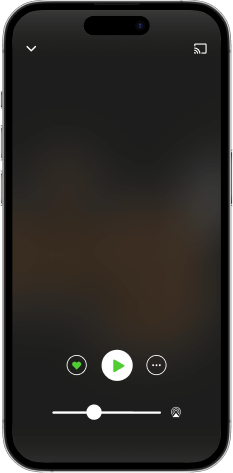

JCO Oncology Practice Podcast
baixe o aplicativo,
ouça.











